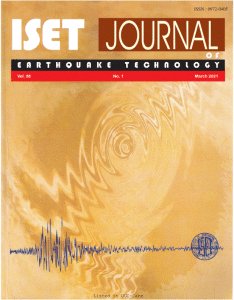Home > Issues & Journals
An earthquake response spectrum method For linear light secondary substructures
Giuseppe Muscolino* and Alessandro Palmeri**
Paper No.: 482
|
Vol.: 44
|
No.: 1
|
March, 2007
|
pp. 191-209

Abstract
The earthquake response spectrum is the most popular tool in the seismic analysis and design of structures. In the case of combined Primary-Secondary (P-S) systems, the response of the supporting P substructure is generally evaluated without considering the S substructure, which in turn is only required to bear displacements and/or forces imposed by the P one (“cascade” approach). In doing so, however, the dynamic interaction among P and S components is neglected, and the seismic-induced response of the S substructure may be heavily underestimated or overestimated. In this paper, a novel CQC (Complete Quadratic Combination) rule is proposed for the seismic response of linear light S substructures attached to linear P substructures. The proposed technique overcomes the drawbacks of the cascade approach by including the effects of dynamic interaction and different damping in the substructures directly in the cross-correlation coefficients. The computational effort is reduced by using the eigenproperties of the decoupled substructures and only one earthquake response spectrum for a reference value of the damping ratio.
Keywords: CQC (COMPLETE QUADRATIC COMBINATION) RULE, EARTHQUAKE RESPONSE SPECTRUM, LIGHT SECONDARY SUBSTRUCTURES, NON-CLASSICALLY DAMPED STRUCTURES, NON-STRUCTURAL COMPONENTS
©2025. ISET. All Rights Reserved.